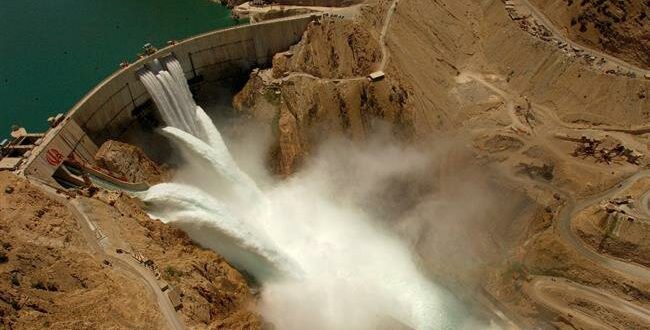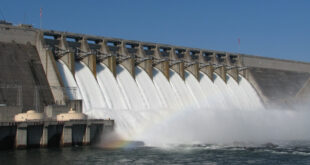At least 76 people were killed after the heaviest rains recorded in the country in 70 years hit northern. southern and southwestern Iran. Surging rivers burst their banks. sending an avalanche of floodwaters into villages and towns which drove hundreds of thousands of people from their homes.
According to Interior Minister Abdolreza Rahmani Fazli. the flooding caused an estimated $2.5 billion in damage to roads. bridges. homes and farmland. It affected 4.400 villages. damaged 14.000 kilometers of roads and destroyed more than 700 bridges.
Iran’s state budget is already stretched amid US sanctions which are preventing foreign aid from reaching the country. Iranian Red Crescent Society (IRCS) says it has not received a penny from a few million dollars of money pledged by foreign donors because its SWIFT and hard currency accounts are blocked under the US sanctions.
Mobilization factor
That means Iran has to rely on its own resources to cope with the disaster. and so it does. Since its onset. the tribulation has triggered a deluge of humanitarian aid flowing in from every corner of the vast country.
By tradition. natural disasters rekindle the spirit of empathy and giving in Iran which is no stranger to seismic and geological cataclysms. Most importantly. they mobilize the country. helping groups of different ethnicities. sects and cultures come together and share their altruism.
When Aqqala –a Sunni-majority city of ethnic Turkmens in Iran’s northern Golestan province – was submerged this month. images of turbaned Shia clerics. Basij volunteers and civilians plying shovels and carrying retrieved items over their shoulders through chest-high waters made rounds on social media.
In recent years. football great Ali Daei has become the face of Iranian Azerbaijan. helping rebuild homes in the mainly Kurdish-populated villages which were devastated by a deadly earthquake in November 2017.
As such. Iran seems to deserve plaudits for producing a patchwork of damage repair and remedy for times of affliction. but not for improving the situation or preparing for the next disaster.
Earthquakes and floods are a recurring phenomenon in Iran. for which the country has developed an effective and internationally-recognized disaster preparedness and response capacity.
Disaster management
Since the 1979 Islamic Revolution. Iran has invested heavily and built 600 dams over the past three decades. with an average of 20 a year. Its prolific dam-building policy made the country the world’s third-biggest dam builder after China and Japan.
Around the world. dam building is experiencing a resurgence as more countries look for affordable ways to tap potential benefits of dams which include water supply. electricity generation. flood control. recreation and irrigation.
For most countries. the extent of the recent floods would have been difficult to manage and damages from the disaster would have been inevitable.
Iranian officials say dams played a crucial role in the damage control and saved many lives and properties.
According to governor of southwestern Khuzestan province Gholamreza Shariati. emergency discharges from dams and reservoirs added to floodwaters. but they also prevented the dams from overflowing or catastrophic breaches as river waters continued to rise upstream.
Several villages and towns near Dez and Karkheh. the oil-rich province’s two major dams. were evacuated as authorities worked round-the-clock to control floodwaters and to minimize possible damage.
In a space of five days. three billion cubic meters of water flowed into dam reservoirs in Khuzestan due to rainfall. 1.8 billion of which was above capacity and had to be released. Energy Minister Reza Ardakanian said.
“Dams played a decisive role in reducing damages in Khuzestan Province.“ he said.
Ahvaz. the provincial capital of more than 1 million people which is cut through by Iran’s most effluent and only navigable Karun river. was saved as a result. except for a few districts which were inundated.
“Karkheh dam prevented enormous damages in the country.“ Parviz Fattah. the president of the Imam Khomeini Relief Committee (IKRC). said.
Debate over dam building
Dam building has a long history in Iran. dating back to the 6th century BC when the Persian Achaemenid empire tried to probably build first dams on the Euphrates and Arvand rivers.
Today. modern technologies are increasingly being employed to improve dams so they are less harmful to people and the environment.
Through its nascent space program. Iran aims to send satellites into space which can help its researchers develop models to simulate historical water flows and project how those flows may change as a result of dam construction.
They can analyze how dams impact the flow of rivers. local agriculture. fisheries. irrigation systems and wetland ecosystems.
As Iran has faced a severe drought in recent years. some critics have argued that a number of dams are adding to the environmental damage and impacting the economies and social structures of communities.
Iran’s great Lake Urmia in the country’s northwest has been one of the worst ecological disasters of recent decades. It is fed by 13 rivers. but the lake has been shrinking since 1995 due to a combination of prolonged drought. over-farming. and dams.
With better precipitation and the opening of spillways from several dams this year. Lake Urmia finally appears to be stabilizing and officials see the start of a revival.
Heavy damage from the recent floods has been blamed on widespread disregard for safety regulations in building and road constructions near rivers.
As a result. some experts have called the floods as a man-made disaster and called for longer-term development planning by all stakeholders in such sectors as education and urban planning.
The debate against the construction of dams has also lost much of its heat. with the only argument being that future dam building has to be conducted with better study and foresight.
 Iran Energy News Oil, Gas, Petrochemical and Energy Field Specialized Channel
Iran Energy News Oil, Gas, Petrochemical and Energy Field Specialized Channel




